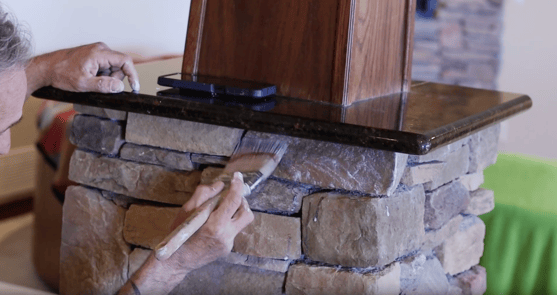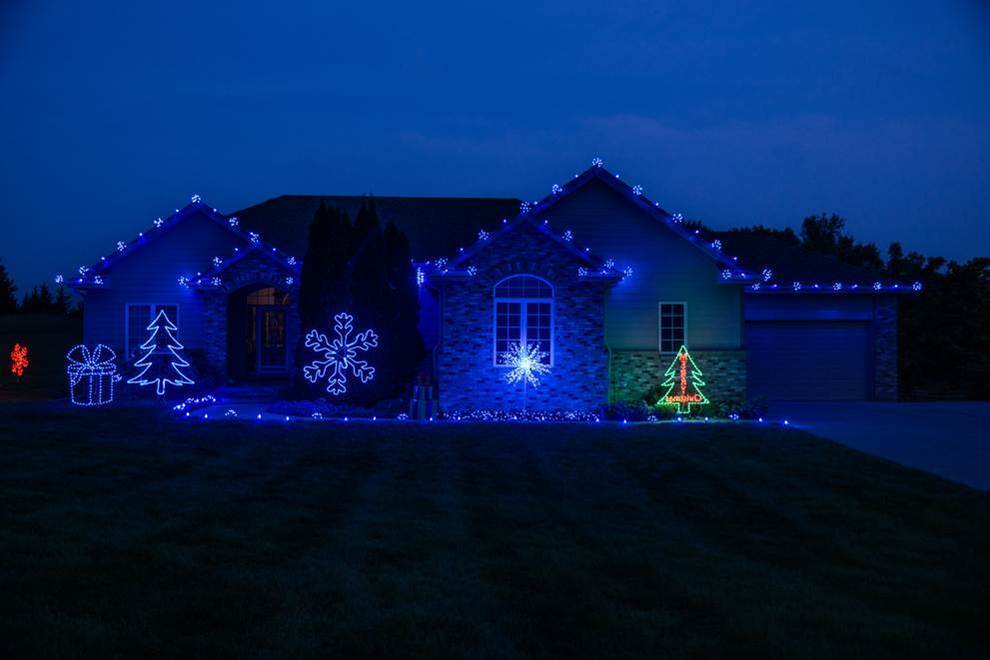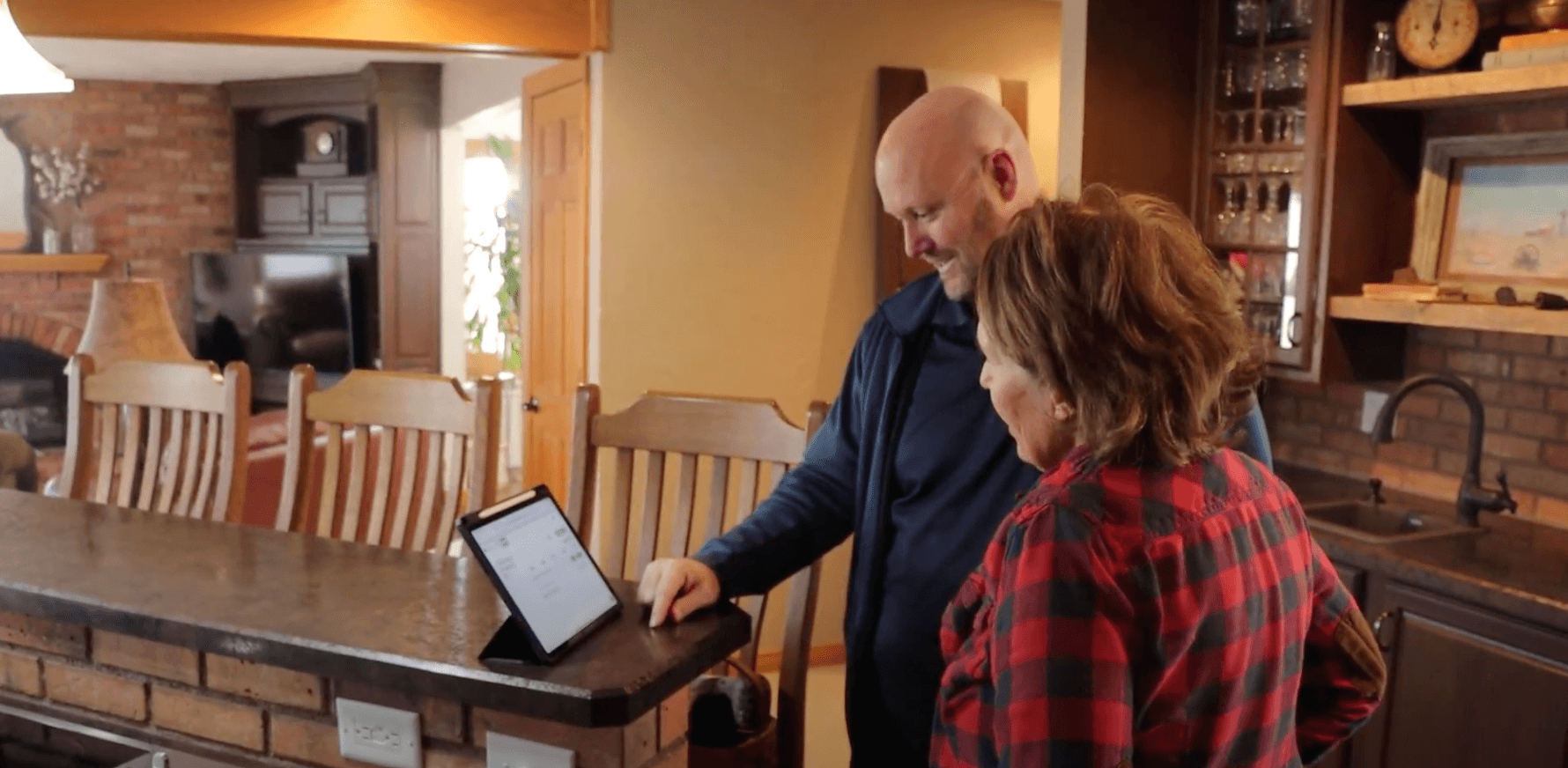Pros & Cons of Sealing Stone Masonry
April 11th, 2024
4 min read
-Apr-11-2024-06-13-59-2230-PM.png?width=800&height=418&name=Blog%20Post%20Image%20Size%20(5)-Apr-11-2024-06-13-59-2230-PM.png)
If you don’t love the look of the stone masonry inside or outside of your home, you may be struggling to find a solution. One common option is sealing it with a high-quality sealer. This can be done as a clear finish to give it a subtle sheen or on top of paint to change the color and protect it.
With years of experience in the home improvement industry, at Brush & Roll Painting in Omaha, NE, we have gained valuable expertise in the selection and application of products for paintable surfaces in your home.
Watch this video below for a look inside a job with Brush & Roll Painting as we seal stone.
In this article, we'll explore the pros and cons of sealing your stone masonry surfaces, providing you with valuable insights to help you make an informed decision.
Pros of Sealing Stone Masonry
1. Enhanced Protection
Sealing your stone masonry surfaces with a high-quality sealer not only provides an additional layer of protection against moisture, dirt, stains, and weathering but also acts as a shield that helps prolong the life of the surface and ensures that its appearance remains pristine over time. By creating a barrier that guards against the elements and everyday wear and tear, the sealer becomes a valuable layer in maintaining the beauty and integrity of your stone masonry, both inside and outside your home.
2. Preservation of Natural Beauty
-Apr-11-2024-06-03-19-1846-PM.png?width=570&height=298&name=Blog%20Post%20Image%20Size%20(2)-Apr-11-2024-06-03-19-1846-PM.png) A clear sealer preserves the natural beauty of the stone masonry, enhancing its original color and texture. A clear sealer for stone will also prevent yellowing.
A clear sealer preserves the natural beauty of the stone masonry, enhancing its original color and texture. A clear sealer for stone will also prevent yellowing.
Stones may turn yellow, often due to moisture build-up and improper maintenance. It can be difficult to remove a yellow stain on stone, so a sealer is your best bet at preserving the stone.
3. Versatile Application
Sealers can be applied to a wide range of surfaces, both inside and outside of your home. This list includes pavers and walkways, brick, tile, stucco surfaces, concrete, brick, and natural and artificial stone on fireplaces, pillars, or the exterior of your home.
This means if you have multiple areas you are considering sealing, they can all have a uniform finish.
4. Compatibility with Paints and Stains
-Apr-11-2024-06-13-19-9657-PM.png?width=567&height=296&name=Blog%20Post%20Image%20Size%20(6)-Apr-11-2024-06-13-19-9657-PM.png)
These sealers not only provide an additional layer of protection and durability to the underlying finish but also act as a versatile solution for enhancing the aesthetic appeal of your stone masonry surfaces.
By serving as topcoats for paints and stains, they allow for customization and creativity in color choices, while ensuring long-lasting performance and resistance to wear and tear. With the right sealer, you can achieve a seamless and cohesive look that not only protects but also beautifies your stone masonry, making it a standout feature in your home's interior or exterior design.
5. Durable Finish
A properly applied sealant forms a layer of durability that acts as a shield against scuffing, abrasion, and fading, ensuring that your stone masonry surfaces retain their beauty and performance for years to come. This protective barrier not only enhances the overall longevity of the surfaces but also provides a sturdy defense against everyday wear and tear, making it an ideal solution for maintaining the integrity and aesthetic appeal of your home's interior and exterior stone features.
6. Easy Application and Cleanup
 For the best results, sealants are typically applied with a brush, ensuring thorough coverage and a smooth finish. It's important to pay attention to the stone or concrete cracks, as the sealer must be carefully applied between them to create a seamless and even layer that enhances the overall look of the surface.
For the best results, sealants are typically applied with a brush, ensuring thorough coverage and a smooth finish. It's important to pay attention to the stone or concrete cracks, as the sealer must be carefully applied between them to create a seamless and even layer that enhances the overall look of the surface.
When it comes to cleanup, there's no need to worry about a lengthy or messy process. Simply using soap and water can effectively remove any excess sealer or spills, making the project hassle-free and manageable. This quick and easy cleanup routine ensures that the sealing process is not only beneficial for your stone masonry surfaces but also convenient for you as the homeowner.
Cons of Sealing Stone Masonry
1. Maintenance Required
While sealers provide excellent protection, they may require periodic reapplication to maintain their effectiveness, especially in high-traffic areas or outdoor environments. For many surfaces, this may be every 2-5 years.
2. Potential for Overuse
Overusing sealant or applying it too frequently can have unintended consequences, such as creating a thick buildup on the surface that can result in an overly glossy or unnatural appearance. This can detract from the natural beauty of the stone masonry and may require additional steps to correct. It's important to find the right balance in the application of sealant to ensure a seamless and aesthetically pleasing finish that enhances the overall look of your stone.
3. Risk of Trapping Moisture
-Apr-11-2024-06-04-09-4730-PM.png?width=609&height=318&name=Blog%20Post%20Image%20Size%20(3)-Apr-11-2024-06-04-09-4730-PM.png) Improperly applied sealers can trap moisture within the stone or masonry, creating a breeding ground for potential issues such as efflorescence, which manifests as a visible white deposit of salts on the surface. This unsightly occurrence not only detracts from the natural beauty of the stone but can also indicate underlying moisture problems that may lead to further damage if left unchecked.
Improperly applied sealers can trap moisture within the stone or masonry, creating a breeding ground for potential issues such as efflorescence, which manifests as a visible white deposit of salts on the surface. This unsightly occurrence not only detracts from the natural beauty of the stone but can also indicate underlying moisture problems that may lead to further damage if left unchecked.
Additionally, trapped moisture can also promote the growth of mold and mildew, posing health risks and requiring extensive remediation efforts. It is crucial to ensure proper application of sealers to prevent these issues and maintain the integrity of your stone masonry surfaces.
4. Compatibility Issues
Certain types of sealants may not be compatible with all types of stone or masonry surfaces, so it's essential to choose a product that is suitable for your specific application.
If you are hiring a painter for your project, you should discuss the product with them to feel confident they are using the best product for your project.
Should You Seal Your Stone Masonry?
In conclusion, while considering improving the look of your stone masonry on the exterior or interior of your home, you might opt for a sealer. Sealing your stone masonry surfaces with a high-quality sealant offers numerous benefits, but it's essential to weigh these pros against the potential cons and consider factors such as cost, maintenance requirements, and protection before making a decision.
At Brush & Roll Painting in Omaha, NE we understand the unique challenges and considerations involved in sealing these surfaces. Our team of experts is committed to providing you with accurate and reliable information to help you achieve the best results for your home.
It’s important that you are confident in every decision for your home. To prepare to hire a painter, download our ultimate guide. This guide gives you the tips and tricks to help you hire the best painting company in Omaha for your project.
Kaylea is the Brush & Roll Painting Content Manager. Kaylea is a Journalism and Media Communications summa cum laude graduate with a minor in Marketing from the University of Nebraska at Omaha. Kaylea manages the marketing for Brush & Roll Painting.


















-Jul-23-2025-02-21-33-5468-PM.png?width=800&height=418&name=Blog%20Post%20Image%20Size%20(2)-Jul-23-2025-02-21-33-5468-PM.png)




-Oct-22-2025-01-39-19-5208-PM.png?width=800&height=418&name=Blog%20Post%20Image%20Size%20(1)-Oct-22-2025-01-39-19-5208-PM.png)


